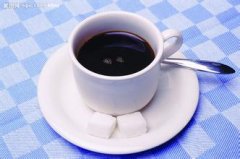Description of Flavor and Flavor of Fine Coffee Bean berry
Coffee bean picking process
As far as picking coffee beans is concerned, there are two ways. One is picking in pieces, that is, picking all the beans in the garden at once, and the other is picking selectively, that is, picking only the ripe red berries at intervals of 8 to 10 days, so you need to pick more times in the garden. Compared with the former method, the latter method is labor-intensive and expensive, and is generally used only for Arabica coffee beans, especially those that need to be washed.
The number of coffee beans picked depends on a variety of factors, the most obvious being the height of the trees and the layout of the farm or plantation. The average farm can pick an average of 50 to 100 kilograms a day. But only 20 percent of these beans are real coffee beans, so the average picker can only pick 10 to 20 kilograms of coffee beans a day. Coffee beans are in bags with a standard mass of 45 to 60 kilograms. As a result, it takes some workers three to six days to fill a bag.
It has been calculated that the cost of harvesting a plantation or farm is half of the total cost of the year. In Brazil, people have tried many times to reduce these costs by mechanical picking. The machine shakes coffee branches across the coffee tree so that the berries that are loosened by ripeness will fall into the funnel. But this can only be done in places where natural conditions are better, and they need to be adjusted first, because the machine can only be used where trees can be planted in rows and rows straight. Afterwards, you also need to check the mechanically picked coffee beans and practice the leaves and branches that fell in the funnel. Picking in this way is still troublesome.
This method is mostly used for lower-grade coffee beans and is still widely used in Brazil, Ethiopia, Congo, Indonesia, Yemen and other places.
The washing method is also called wet treatment: after the outer pulp of the coffee fruit is removed by the pulp separator within 12 hours after the coffee is picked, the coffee beans are soaked in a large cement tank filled with water to separate the fruit. The coffee beans are then pasted in the fermentation box for about 12-36 hours, containing 15% water after fermentation, and the fermented coffee beans are washed clean with clean water. The coffee beans are dried in a dryer or dried in the sun, and the coffee beans are called "parchment coffee beans", waiting for export.
Fresh fruit-soak soft-remove exocarp-ferment the coffee fruit with pulp in the fermentation tank-rinse the pulp gum with water-dry the coffee fruit with endocarp-remove the endocarp with a peeling machine-polish the seed coat-coffee raw beans
Advantages: coffee beans have stable quality, beautiful color and less impurities
Disadvantages: the processing cost is too high and requires a lot of water.
Note: generally used for higher quality Arabica coffee beans, such as Blue Mountains, Colombia, Mexico, Guatemala, etc.

Important Notice :
前街咖啡 FrontStreet Coffee has moved to new addredd:
FrontStreet Coffee Address: 315,Donghua East Road,GuangZhou
Tel:020 38364473
- Prev

What is the difference between high altitude coffee beans and low altitude coffee beans?
Arabica, a high-altitude and low-altitude coffee bean, is deeply loved by Chinese people with a short history of coffee contact because of its strong fruity aroma. it was introduced to China by missionaries in the 19th century. It is widely planted in Panzhihua, Sichuan, and the dry-hot valley of the Jinsha River, which is more than 1000 meters above sea level in western Yunnan. the local people use the way of diverting water up the mountain to solve the seasonal rainfall.
- Next

The origin of instant coffee. The advantages and disadvantages of instant coffee which is better than coffee beans?
Why is instant solution unhealthy? [first of all, production process] freeze-drying is a kind of instant production method which can relatively preserve the flavor of coffee, which is generally used in high-end instant solution, but the production cost is high, even if the aroma of coffee is well preserved, the price is unacceptable and the taste is not satisfactory. This is another topic. The vast majority of instant coffee is dried by spray drying.
Related
- Guji coffee producing area of Guji, Ethiopia: Humbela, Shakiso, Wulaga
- What is the most expensive variety of Qiloso in BOP multi-variety group?
- How to store the coffee beans bought home?
- Why are Yemeni coffee beans so rare now?
- Ethiopian Sidamo all Red Fruit Sun Sun Santa Vini Coffee beans
- SOE is mostly sour? What does it mean? Is it a single bean? what's the difference between it and Italian blending?
- Is Italian coffee beans suitable for making hand-brewed coffee?
- How to choose coffee beans when making cold coffee? What kind of coffee beans are suitable for making cold coffee?
- Just entered the pit to make coffee, what kind of coffee beans should be chosen?
- Can only Japan buy real Blue Mountain Coffee? What are authentic Jamaican Blue Mountain coffee beans?

